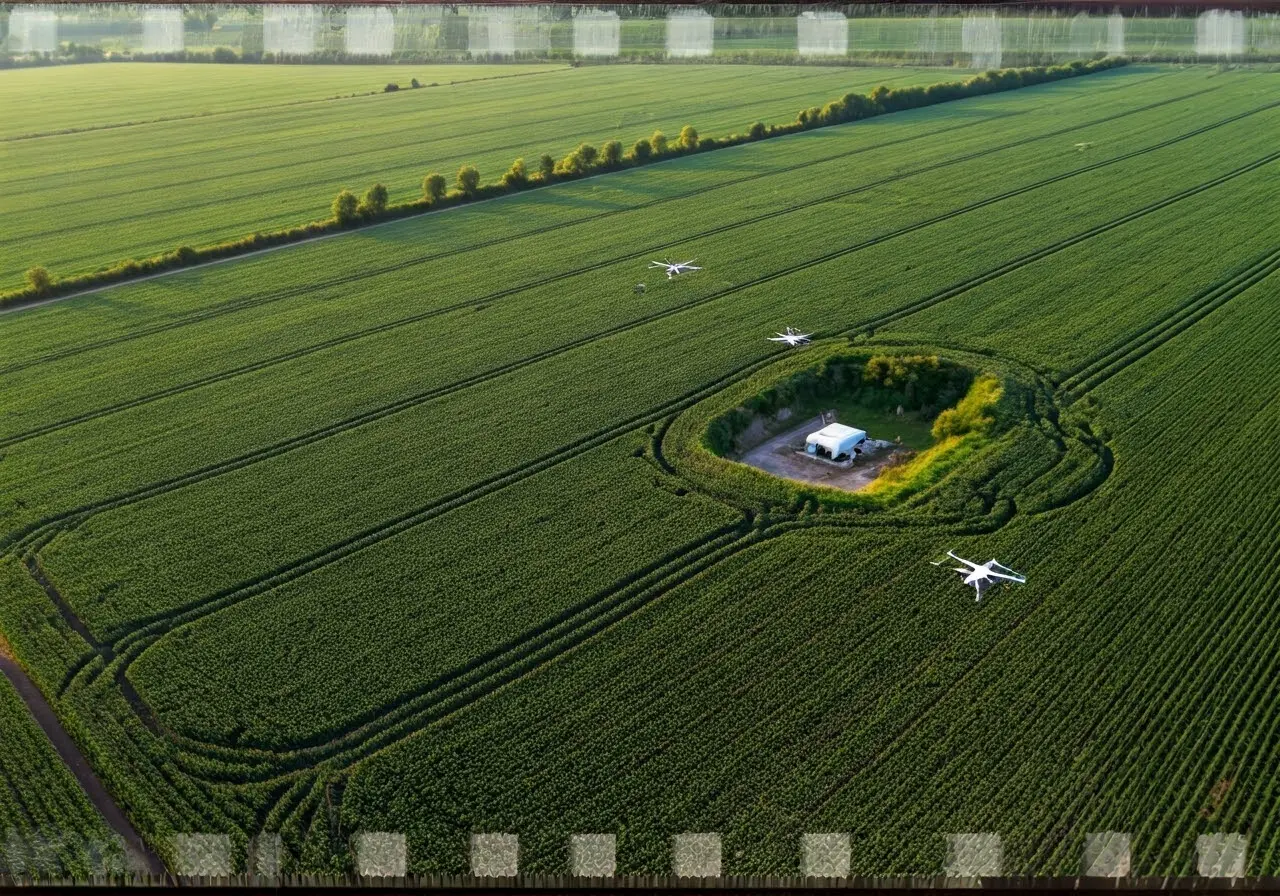
How Drone Based Agriculture is Transforming Crop Management
Share
In recent years, technology has revolutionized various sectors, and agriculture is no exception. Drone-based agriculture is an emerging trend, offering new opportunities for improving crop management. This blog explores the intriguing ways drones are reshaping the agricultural landscape, making farming more efficient and sustainable.
The Rise of Drone Technology in Agriculture
Drone technology has gained significant traction in agriculture due to its ability to cover vast areas quickly and gather crucial data. Farmers are integrating drones to monitor crops, manage resources, and improve yields. This transformative technology provides an eye in the sky, offering farmers insights that were previously only attainable through labor-intensive fieldwork. The aerial perspective drones offer allows for rapid identification of areas in need of attention, from pest infestations to uneven crop growth, thus enabling timely interventions which are vital for maintaining high crop yields. The ability to access detailed data swiftly positions drones as indispensable tools in modern farming, leading to significant improvements in crop management.
Moreover, drone technology is becoming more accessible, with a range of options available for different farming scales and needs. For example, larger farms may invest in professional-grade drones for extensive monitoring, while smaller farmers can utilize consumer-grade models equipped with essential sensors for basic crop assessments. The market’s adaptability demonstrates why drones are becoming a fixture in modern farming, offering versatile and scalable solutions. Farmers traditionally constrained by challenging terrains can now effectively manage their fields, regardless of size or location. As this technology continues to evolve, so too does its application in agriculture, promising exciting advancements and increased sustainability.
Precision Farming with Drone Data
Drones equipped with advanced sensors provide high-resolution images and real-time data, allowing farmers to make precise decisions. This precision farming technique helps identify pests, assess soil health, and apply resources efficiently. Through the utilization of multispectral imaging, drones analyze crop health, detecting variations invisible to the naked eye. This capability aids in making informed decisions, ensuring inputs are tailored appropriately to specific field requirements, minimizing waste, and enhancing crop productivity.
The integration of AI in agriculture further elevates the capabilities of drones. By correlating imagery from drones with artificial intelligence, farmers gain unparalleled insights. AI algorithms process data from various drones, offering comprehensive analytics on crop health, weather prediction, and disease forecasting. Such leverages enable proactive measures, equipping farmers with the tools needed to optimize farming practices while mitigating risks, thereby boosting overall yield and efficiency. The seamless integration of technology and agriculture illustrates a pathway to smarter, more productive farming.
Reducing Environmental Impact
Drone-based agriculture plays a crucial role in reducing environmental impact. By optimizing resource usage, drones help minimize fertilizer and pesticide application, reducing pollution and conserving biodiversity. Targeted spraying ensures that chemicals are used only where necessary, protecting surrounding ecosystems and non-target vegetation from exposure. Furthermore, precise water management enabled by drones reduces water waste, an essential factor in areas facing water scarcity.
Reducing chemical input through drone technology aligns with sustainable farming principles, creating a balance between high productivity and environmental stewardship. This approach supports agricultural practices that not only meet human needs but also enable the preservation and improvement of natural ecosystems. By integrating drones, farmers contribute to a more sustainable agricultural ecosystem, one that is equipped to face the challenges posed by climate change and resource scarcity effectively. Through these technologies, agriculture can transition towards methods that safeguard the environment while meeting global food demands.
Challenges and Opportunities
While the potential of drones in agriculture is vast, there are challenges to overcome, including regulatory issues and the need for skilled operators. However, these challenges also present opportunities for innovation and development in the sector. Regulatory frameworks are gradually adjusting to accommodate new technologies, providing clearer guidelines and standards for drone operations in agriculture. This evolution paves the way for smoother integration and growth of drone use on farms, ensuring compliance with safety and privacy regulations.
Despite these hurdles, the benefits offered by drones in agriculture make a compelling case for adoption. As regulations become more farmer-friendly and training programs more accessible, the barriers to entry will likely diminish. This shift represents an opportunity for farmers to harness technology for improved outcomes. Furthermore, as more agricultural operations embrace drone technology, economies of scale may drive down costs, making it increasingly viable for even small-scale farmers to adopt. The transitional process, though requiring investment and adaptation, ultimately enables the achievement of long-term efficiencies and sustainability in crop management.
The Future of Farming with Drones
In conclusion, drone-based agriculture is transforming how farmers manage their crops, offering a blend of efficiency, precision, and sustainability. As technology continues to advance, the agricultural sector can look forward to even more innovative solutions, ensuring that farming remains not only productive but also environmentally friendly.

